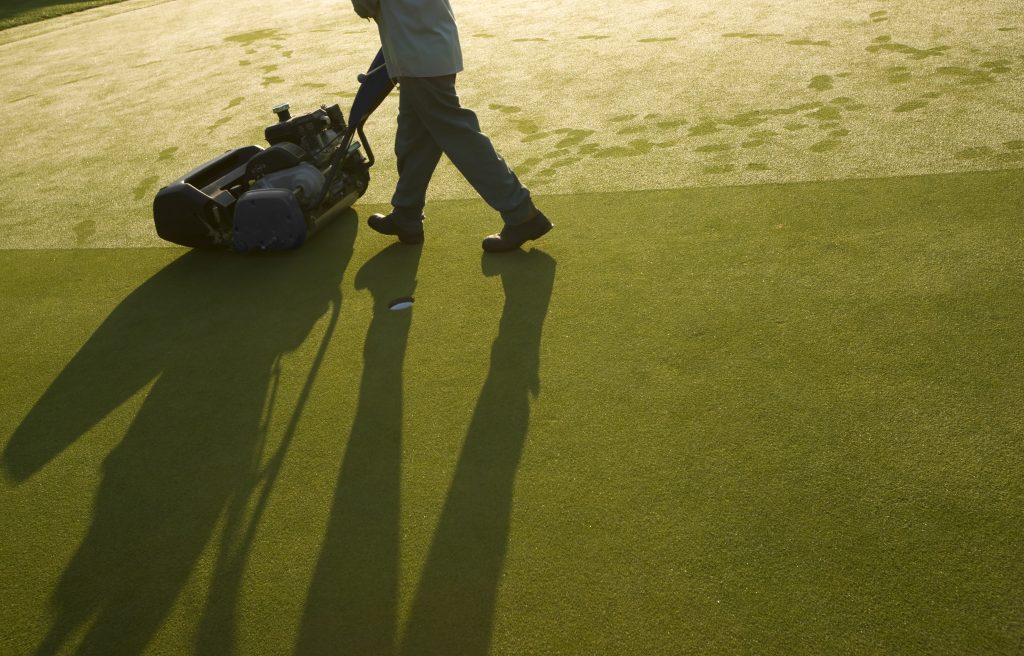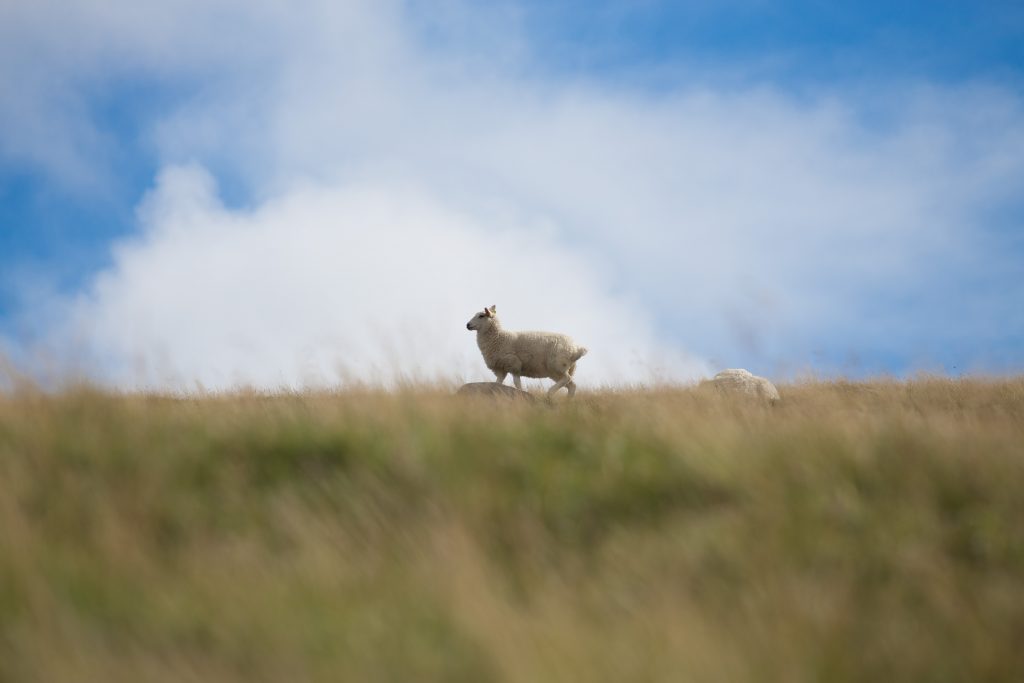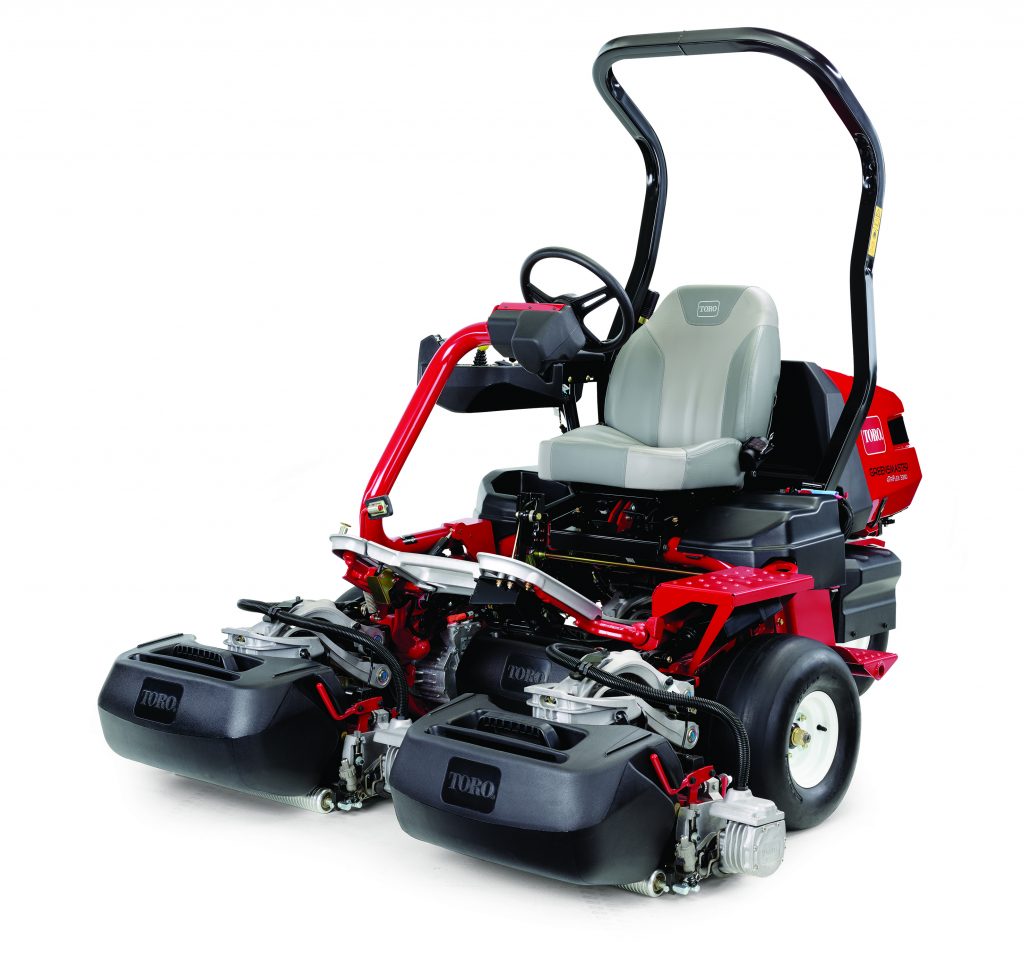‘Always wear sunscreen’ and what else I learnt from nearly 40 years as a greenkeeper
Related Articles
Dr John Dempsey PhD was a greenkeeper in Ireland from the early 1980s until last year. Here, he details how the industry evolved beyond recognition in that time, from using sheep and shovels to maintain venues to the technology that goes into course machinery today – and he details some of the most important lessons he learned in his career.
Last June I parted ways with the golf club I had worked for after 35 years as a greenkeeper and course superintendent. So I thought this would be a good time to look back and put down on paper some of the experiences and observations of my time on the golf course, in particular, how things have changed and evolved over the last 35 years.
How did I get into the turfgrass business? Well, a friend of mine reckoned this was the advice I received in the early 80s: ‘Get into grass John. They pay you to cut it, but it just keeps growing! Job’s a good’un son … and you can make stripes!’ The idea of making stripes was attractive for sure, but the real reason I got into turfgrass was more basic – I didn’t have a job! My father-in-law was a greenkeeper going back to the 1960s, so that was it, I started in the early 80s on a career path that provided a few lows, many challenges, but out balancing these were the numerous highs from job satisfaction and the people I met and worked with over the years.

I began my turfgrass career at Royal Curragh Golf Club, this is Ireland’s oldest golf course and club; golf was first played there in 1852. It was established by members of a Scottish regiment of the British army based at a nearby garrison camp. It’s a historic club in other ways too, the course is established on an open grassland, which has been continuously grazed by sheep since Neolithic times. There are numerous archaeological sites, such as burial rings and raths in the area and within the golf course itself. More recent historical remains are the trenches which surround the approach to the fifth and sixth fairways. These were dug out in 1915/16 during the First World War and used for training recruits before they were sent to the Battle of the Somme, something to consider as you worry about your sliced shot perhaps!
So, what was golf course maintenance like in Ireland back in the last century? Well, here’s a clue – my first encounter with a golf green was when walking onto it for the first time and thinking, ’wow! how nice and soft this is, like walking on a mattress.’ Oh dear, aeration and topdressing were not very frequent practices! Turf management operations were basic really, with minimal inputs and maintenance procedures. Well, the greens received the odd run of a pedestrian slitter, once a year … if they were lucky! Top-dressing was a screened topsoil, fine clay particles spread over the surface and worked in with birch brushes! I mentioned low inputs, this was true in most cases except for nitrogen. Poa dominated push-up greens in Ireland’s climate receiving 450 kg/ha of N per year, no wonder they were soft! That was the early 80s, course upkeep consisted mostly of mowing greens; we had a ride-on triplex Toro, a tractor and gang mower to cut the grass and daisies on the fairways. We applied calcium ammonium nitrate, sulphate of ammonia and ferrous sulphate and used washing up liquid for dry patches on the greens … the sheep maintained our rough!
By the start of the 1990s however, things began to change, we began to educate ourselves, read up on techniques; did greenkeeping courses. We purchased a Cushman and a ride-on fairway mower. We now had some tools, we could aerate regularly and top-dress, not with the surface sealing clay / soil, but with washed sand of a correct particle size, we could start to shape and present fairways. Our nutritional inputs were modified, our greens began to firm up and play well.
As the years rolled through the 90s and into the 21st century, golfer expectations increased – they wanted better playing surfaces, not just through summer, but year-round and they wanted presentation, the Augusta effect! So the greenkeepers workload increased, we had to understand the complex requirements of turfgrass nutrients and tailored inputs to the various areas of the course, to suit the surface playability targets and environmental conditions. New products and maintenance techniques made the biggest impact during this time. For me, the availability of fairway mowers, vertidrains and other aerators; top dressers, which replaced using shovels, integrated sprayers, instead of tractor mounted agricultural ones, all these produced significant impacts during these changing times.

Then…
When I started, many years back, we had several mainstay fungicides: Iprodione, Chlorothalonil and Carbendazim, which we used though the autumn and winter. These were used to control fusarium patch – microdochium nivale (in the early 80s this was know as Gerlachia nivale, but that’s another story). We had heard of anthracnose, dollar spot, take all and red thread, but these were things we didn’t deal with. We had Chlordane, which suppressed worm casting for seven or eight years … that was quickly banned! We had granular fertilisers – no liquids or foliars to speak of and no seed-head suppression or PGRs. A different maintenance regime in those days!
As we moved into the 21st century there was a lot of new challenges, but also many new maintenance procedures and product availability. Fertiliser and chemical products have been the source of some of the greatest changes to course maintenance practices during my time. The range of fertilisers, both granular and liquid expanded, PGRs, wetting agents and new plant protectant chemistries became available. We now had the equipment and we had the products. We then had to make the correct choices and put together maintenance programmes to deliver what the modern golfer wanted. We were transforming from grass-cutters to professional turfgrass managers! Golf course playing conditions and presentation improved astronomically. Golfers still wanted more, that’s something you learn quickly, to paraphrase the old saying ‘you can please some of the golfers some of the time’ … you know the rest.
So, by this time we were really getting our act together, good products (some even had research to support them) good machines and good education and management practices. But one thing you learn in this business is there’s always new challenges. Today we must deal with restrictions of plant protectants, environmental awareness, climate changes and, something that has really come to the fore recently, the pressures this lifestyle has on your wellbeing and family life.
We’re dealing with chemical restrictions and climate changes as we have done with previous challenges, we’re adapting, looking to research and education and new and improved methods to overcome them. With plant protectant restrictions for disease control and stress challenges to our turfgrasses, we are turning to a more integrated management approach. Learning how all the factors which affect plant health interact and how we can influence these factors. Managing cultural, nutritional, environmental and biological factors to ensure healthier more robust swards, whilst still producing excellent playing surfaces. The days of applying pesticides with long-term residual effect on our ecological partners are long gone. We are now very aware of how our courses are part of the bigger picture and we look to nurture and encourage biodiversity, and to protect our unique environments.

…And now
The pressures a turfgrass manager must deal with these days are coming much to the fore in the last couple of years. Effects this lifestyle has on your wellbeing and family life can be devastating. I didn’t think I was under stress while working as a superintendent, but when I finished in that position, I quickly realised I was constantly thinking about the job, 24/7. Weather conditions, machine breakdowns, staff problems and dealing with members and committees all can take their toll. I’m no expert here, but I will say take advice and listen to the many people in the industry who are talking on this subject and deal with it.
What summary can I give after 35 years on the job? Well when I started, golf courses, certainly in Ireland, were mostly greens-orientated, with very little attention given to any other areas. Maintenance procedures were basic, with little understanding of the science behind turfgrass maintenance, golf club committees knew all and gave the instructions (450 kg/ha N)! Things have certainly changed, mostly for the better. Greenkeepers, who were once just grass-cutters, are now respected and well educated (some are even doctors – how did that happen?!) Would I recommend the job to others? Hmmm … it’s not easy, it requires dedication and acceptance of long hours and criticisms from people you know haven’t a clue as to what they’re talking about. But tremendous satisfaction can also be obtained when you survey your course, and everything comes together, and the place is shining.
I had many years in this job, made an awful lot of good friends; fellow workers, golfers and committee members, and had plenty of job satisfaction. I learned a lot, I set myself targets and progressed personally. Advice to young guys going into the business? Keep learning, not only from formal education, but talk to the old guys, they know an awful lot! I’ve met a lot of greenkeepers around the world and their knowledge is always outstanding, there’s no end to what you can learn.
And sunscreen … always wear sunscreen!
Dr John Dempsey was course manager at Royal Curragh GC for 26 years. He has a degree in turfgrass science and a PhD in turfgrass pathology, and is a member of GreenKeeping’s editorial advisory panel

























